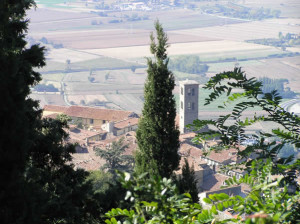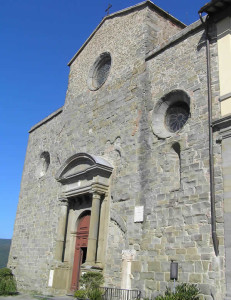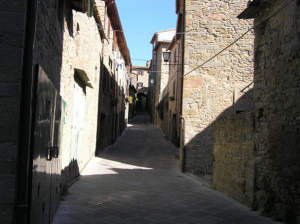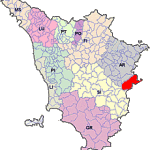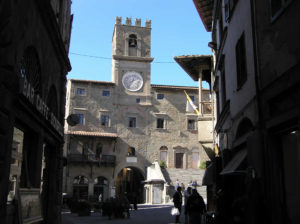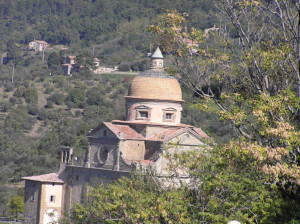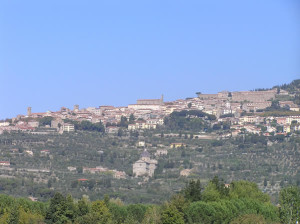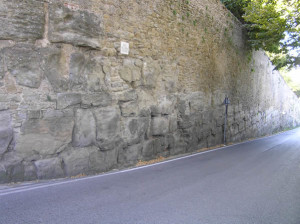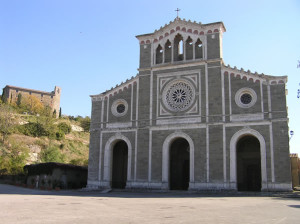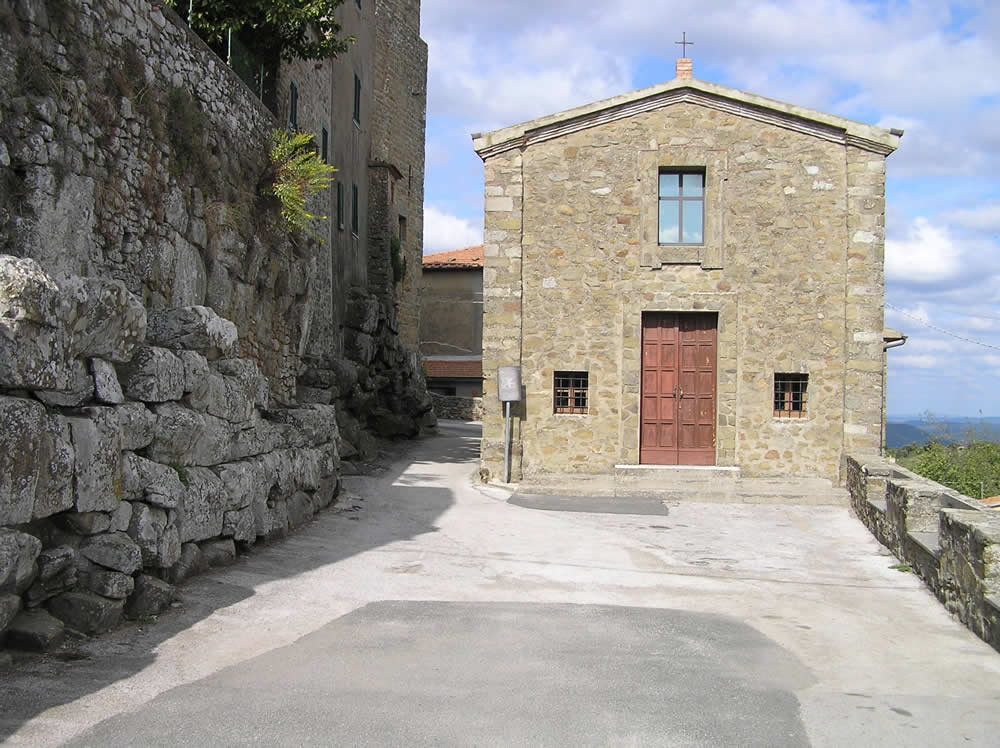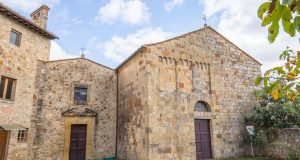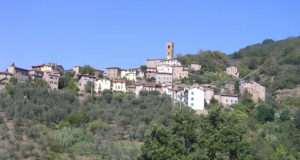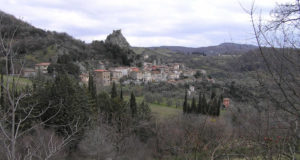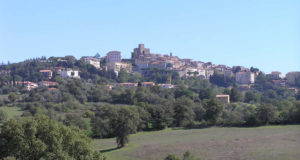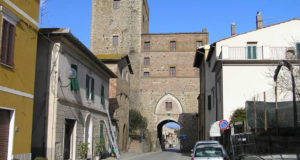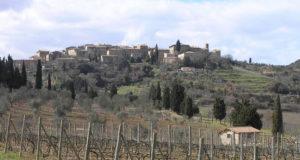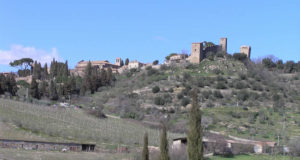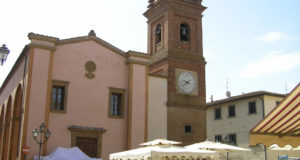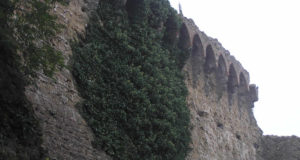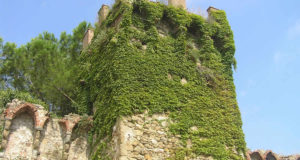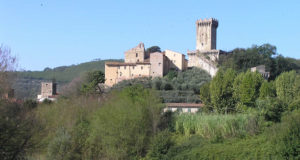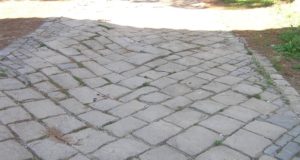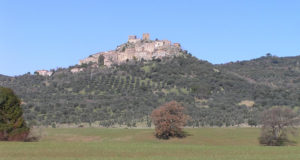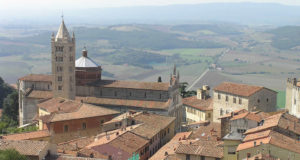![]() Français
Français ![]() Deutsch
Deutsch ![]() Español
Español ![]() Italiano
Italiano
Cortona (23 000 inhabitants) is a beautiful town in the province of Arezzo, which is located on the slopes of a hill about 500 meters high, is now a major tourist city with many tourist attractions primarily Etruscan, Roman, Medieval and Renaissance.
The town of Cortona traces its historical roots in the Etruscan period, probably founded between the sixth and fifth centuries BC, the city became even more important in the fourth century BC when it became the capital of lucumonia, in this period were built its powerful Etruscan walls longer than 2 km.
Cortona became first ally and then part of the Roman Empire and its citizens received the Roman citizenship in 89 BC. With the fall of the Roman Empire Cortona went to meet a considerable period of decline.
The city recovered only in the late Middle Ages, when in the thirteenth century it became a free city, always fighting with nearby Arezzo. Cortona in 1325 was elevated to the rank of diocese and was given in worship to the Ranieri dei Casali, whose family ruled the city for 80 years. At the beginning of the fifteenth century Cortona became part of the Florentine territories and then followed the story of the Grand Duchy of Tuscany.
WHAT TO SEE IN CORTONA
The old town of Cortona has many prestigious architectural eminences ranging in all periods of history of the city. There are remains of the Etruscan and Roman periods, but first there are buildings of medieval and Renaissance periods. The city center is around the squares Signorelli and Repubblica, on these squares facing the Town Hall – built in the thirteenth century and remodeled several times -, the Palace of the Captain of the People (Palazzo del Capitano del Popolo) of the sixteenth aspect, the nineteenth-century Teatro Signorelli, and the Palazzo Casali , which is the building most interesting of the three.
PALAZZO CASALI
The Palazzo Casali was built in the thirteenth century and was the seat of the lordship of Casali and after the occupation by Florence became the seat of the Florentine captains who enriched the facade of the building with numerous coats of arms. Palazzo Casali has some very beautiful halls, among them the Sala del Biscione and the Salone Mediceo. The Palazzo Casali houses today, in addition to the library and archives, the most important museum of Cortona: the Museo dell’Accademia Etrusca e della città di Cortona.
The museum stretches from prehistory, Etruscan, Roman, medieval times until reaching the nineteenth century. Among the most valuable objects the so-called Etruscan chandelier, bronze object of the sixth century BC, there are also valuable statues greek-Roman and urns. Also interesting are the Egyptian remains of the Museum including a funerary boat, mummies and some sarcophagi. Among the paintings are works of Neri di Bicci, Pietro da Cortona, Luca Signorelli, Bicci di Lorenzo, and of the Cortona artist Gino Severini. Very nice also the so-called Tempietto Ginori masterpiece porcelain of Ginori manufacturing, as well as the collection of gems and jewelery.
THE CATHEDRAL
Another interesting building is the Cathedral of the Renaissance era (late fifteenth century), by Giuliano da Sangallo, with a very special portal by Cristofanello. The interior of the cathedral has three naves and was modified in the eighteenth century. In front of the Cathedral in the former church of Gesù is the Diocesan Museum which houses gold objects, sacred furnishings and works by Fra Angelico, Pietro Lorenzetti, Sassetta, Bartolomeo della Gatta and Luca Signorelli.
To go through the streets Dardano, Guelfa, Roma, Nazionale and Berrettini with rich palaces and churches valuable, very scenic is the so-called “Passeggiata in Piano” that starts near the church of San Domenico and through the public gardens, here you have views over the whole Val di Chiana, Lake Trasimeno and Mount Amiata. At the highest point of the hill of Cortona is the Medici Fortress or Girafalco quadrilateral fortification of the sixteenth century with four bastions. Outside the walls is the church of Santa Maria Nuova of the sixteenth century work of Cristofanello and Vasari.
THE ETRUSCAN CORTONA
Of the Etruscan period are still visible parts of the walls, while in the plain below the city are many Etruscan necropolis. Near the railway station of Camucia is the Tumulo di Camucia dating from the seventh century BC and contains within it two graves. Within a couple of miles north of Camucia in the village of Sodo are two large Etruscans mounds, the so-called Meloni of Sodo both dating from the sixth century BC. Nearby are the remains of an platform altar also the sixth century BC. Also in the village of Sodo is another Etruscan necropolis dating from the second century BC, the so-called Tanella di Pitagora. In the village of Ossaio, along the road to Terontola, are the remains of a Roman villa with beautiful mosaics.
TO VISIT AROUND CORTONA
In the surroundings of Cortona there are some interesting churches and abbeys. An interesting building is undoubtedly the Abbey of Santa Maria in Farneta, the abbey is located along the road connecting Camucia with Foiano della Chiana, about 11 km from Cortona. It is a building that originated in the early eleventh century, of which there remains only the church with a beautiful crypt, is one of the oldest Romanesque buildings in the area of Arezzo.
A little more than 2 km from the town is the Renaissance church of Our Lady of Calcinaio (Madonna del Calcinaio) built between the late fifteenth century and the beginning of the sixteenth century. The church has a beautiful octagonal dome, numerous works of art of the sixteenth century and in the internal rosette a stained glass window of Guillaume de Marcillat of the early sixteenth century. Along the road to Città di Castello – 3 km from Cortona – is the Franciscan hermitage of Celle, built in the thirteenth century and where stopped St. Francis of Assisi.
USEFUL INFORMATION:
Weekly market in Cortona: Saturday morning
Piazza Signorelli/Via Casali
Weekly market in Camucia: Thursday morning
Piazza Sergardi/Via Lauretana
Weekly market in Terontola: Tuesday morning
Via Dei Combattenti
Tourist Information Office
P.zza Signorelli – Palazzo Casali
C.A.P. 52044 – Cortona (AR)
Tel. 0575 637221 – fax 0575 6047
BIBLIOGRAPHY
- AA. VV. “Toscana” Guide Rosse Touring Club Italiano, 2007
- AA. VV. “Accademia etrusca di Cortona” Olschki, 2004
- AA. VV. “Cortona” KMZero, 2013
- AA: VV: “Cortona. Guida della città” Tiphys Editoria e Multimedia, 2012
- cur. Fortunelli S. “Il Museo della città etrusca e romana di Cortona. Guida breve” Polistampa, 2005
- cur. Nocentini S. “Museo diocesano di Cortona. Guida alla visita del museo e alla scoperta del territorio” Polistampa, 201
- Sandrelli Eleonora “Il Beato Angelico a Cortona” Servizio Editoriale Fiesolano, 2013
- Palazzo Comunale, Cortona, Arezzo. Author and Copyright Marco Ramerini.
- Church of Santa Maria Nuova, Cortona, Arezzo. Author and Copyright Marco Ramerini.
- Cathedral, Cortona, Arezzo. Author and Copyright Marco Ramerini.
- Cortona, Arezzo. Author and Copyright Marco Ramerini.
- Etruscan walls, Cortona, Arezzo. Author and Copyright Marco Ramerini.
- Cortona, Arezzo. Author and Copyright Marco Ramerini.
- Basilica of Santa Margherita, Cortona, Arezzo. Author and Copyright Marco Ramerini.
- Cortona, Arezzo. Author and Copyright Marco Ramerini.
 Borghi di Toscana Guida ai borghi e ai paesaggi della Toscana
Borghi di Toscana Guida ai borghi e ai paesaggi della Toscana

